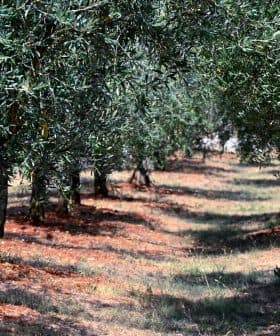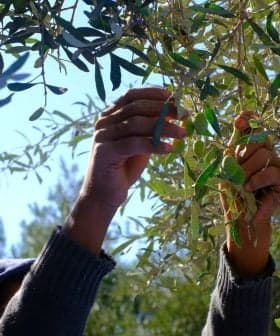 33.5K reads
33.5K readsWorld
How Heat, Light and Oxygen Harm Olive Oil
A three-year study by Australian scientists led by Jamie Ayton confirms that oxygen, light, and heat are detrimental to the quality of extra virgin olive oil, providing guidance on how to gauge its shelf life and use-by date. The study found that high storage temperature, oxygen exposure, and light exposure negatively affect the sensory profile of olive oils, causing rancidity and loss of antioxidants, emphasizing the importance of proper storage conditions for maintaining the quality of olive oil.

Researcher Jamie Ayton at the Australian Oils Research Laboratory
A three-year study by Australian scientists confirms that oxygen, light and heat are indeed among extra virgin olive oil’s worst enemies.
The study also provides the best available guidance for gauging the shelf life and use-by date for olive oils, Jamie Ayton, Rodney J. Mailer and Kerrie Graham state in their report.
The bottom line in “The Effect of Storage Conditions on Extra Virgin Olive Oil Quality (PDF)” is that olive oil should be stored at cool temperatures, away from light and without exposure to oxygen.
“Not just in the short term, but throughout the life of the oil, which includes during the transport, storage and marketing of the oil, as well as when the oil has reached its final destination…the consumer” they say.
“Otherwise, the olive oil can deteriorate so much that it can no longer be classified as extra virgin olive oil, at a huge expense to growers.”
Test results
The study found that high storage temperature and oxygen exposure negatively affect the sensory profile of olive oils. Over time at higher temperatures, the compounds that cause pleasant flavors and aromas in olive oil change and instead cause unpleasant ones. Rancidity develops sooner and free fatty acid levels rise faster.
Similarly, when exposed to oxygen, rancidity starts to develop and olive oil’s sensory properties quickly and significantly decline.
Exposure to light causes a substantial loss of antioxidants, especially tocopherols, and an increase in rancidity compared to oil stored in the dark.
Meanwhile, all three affect — though to different degrees — an oil’s colour. “This is important as the first ‘sensory’ assessment a consumer makes is by assessing the colour of the oil they are going to purchase” the report says..
Study method
Funded by Australia’s Rural Industries Research and Development Corporation (RIRDC) and the Australian Olive Association, the intensive research tracked nine Australian EVOOs over three years, using 882 bottles of olive oil.
- To test the effect of temperature, samples were stored at 15°C, 22°C and 37°C.
- To test for oxygen exposure, some were stored with the bottle lid only loosely attached and 10 mL of oil was removed each month to ensure the head space in the bottle contained oxygen.
- To test for light exposure, samples were stored in clear bottles exposed to sunlight and fluorescent light.
- Chemical parameters for oxidation and ageing, and the sensory characteristics of the oils, were analysed every three months.
.
Lead researcher Jamie Ayton, an edible oils chemist at the New South Wales Department of Primary Industries Australian Oils Research Laboratory, in Wagga Wagga, spoke to Olive Oil Times about the project.
Is there any average shelf life for olive oil? Taking your research into account, how could a producer calculate a best-before or use-by date for their olive oil?
Many factors affect the shelf life of an olive oil, such as the initial oil matrix as well as the conditions the oils are stored under. Oils which have low total polyphenols levels and high levels of polyunsaturated fatty acids will have a shorter shelf life than those which are more robust (i.e. high polyphenols and low polyunsaturated fatty acid content).
As you can see from the results in our report, there is no “blanket” statement which can apply to all oils. The general industry view is that oils which are more than 18 – 24 months old are reaching the outer limits of their shelf life. Having said that, some of the oils in our project were still classified asextra virgin olive oil after 36 months under “reasonable” storage conditions.
After the oil has deteriorated, there are no health implications with using it, it is just that it may no longer be classified asextra virgin olive oil according to standards criteria (IOC or AS5264-2011).
What should shops and consumers do?
Retailers should ensure that temperature is regulated sufficiently. I would suggest less than 25 degrees C would be preferable. Oils should also have minimal exposure to light and radiant heat from lights in supermarkets.
Prior to this, warehousing and transport conditions should be managed in order to have the minimum impact on the oil.
Consumers should follow similar advice. The oil should be stored in the dark at cool temperatures, for example at the back of a kitchen cupboard — not on the windowsill or near the stove top. Once the bottle is opened, exposure to oxygen will occur, therefore the oil should be used quickly, while still fresh.









